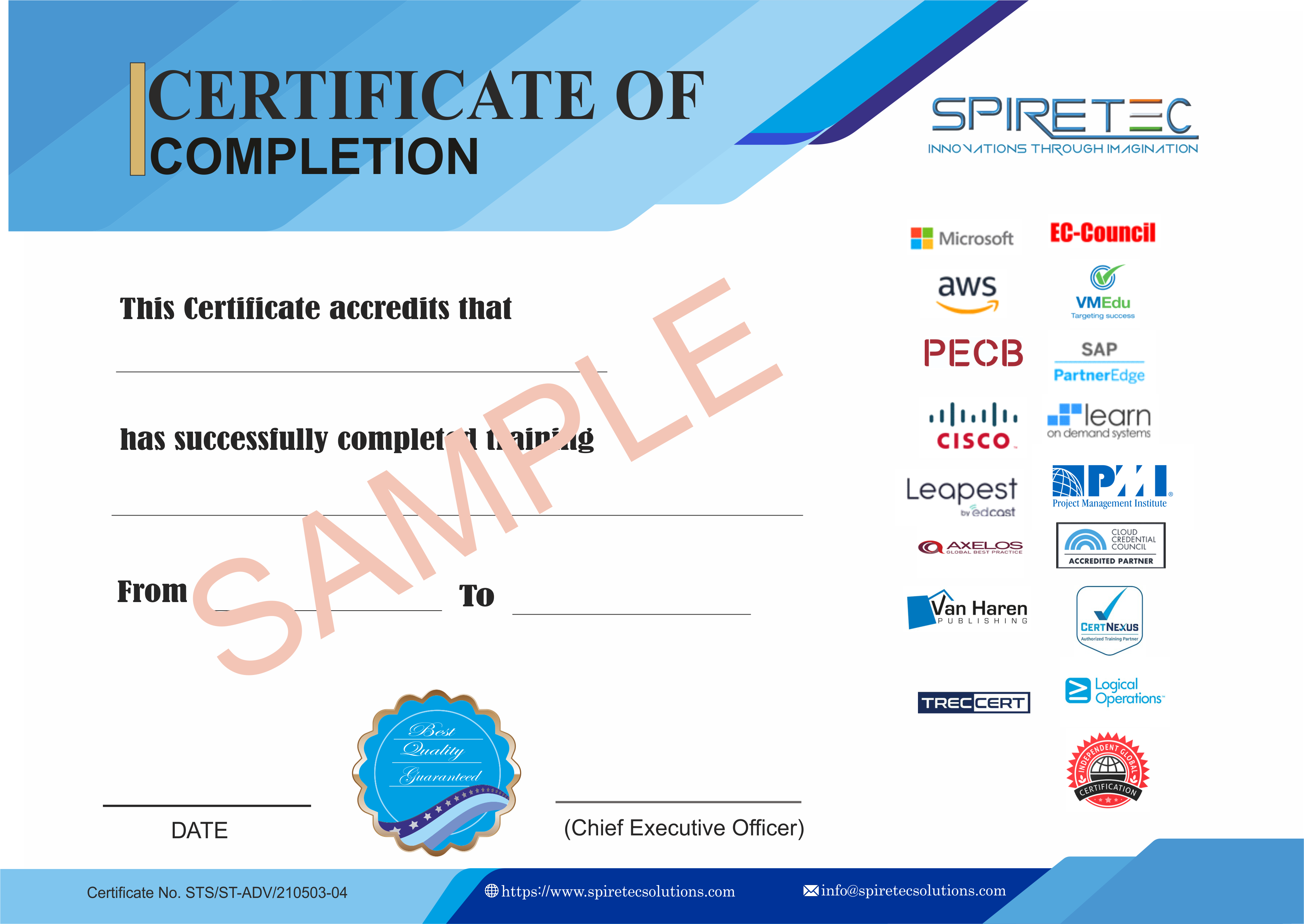In this course, students will learn how to plan and implement an operating system deployment strategy using modern deployment methods, as well as how to implement an update strategy. Students will be introduced to key components of modern management and co-management strategies. This course also covers what it takes to incorporate Microsoft Intune into your organization. Students will also learn about methods for deployment and management of apps and browser-based applications. Students will be introduced to the key concepts of security in modern management including authentication, identities, access, and compliance policies. Students will be introduced to technologies such as Azure Active Directory, Azure Information Protection, and Windows Defender Advanced Threat Protection, as well as how to leverage them to protect devices and data. This course will cover event planning including setting up and managing sessions, speakers, passes, waitlists, venues, sponsors, vendors, logistics, and accommodations. As well as event execution such as creating custom registration fields, managing registrations and check-ins, and the event portal. Then the course will cover survey creation and distribution.
Audience Profile:
This course is designed for IT or marketing professionals responsible for configuring and managing event and survey functionalities within Dynamics 365 for Marketing. Ideal candidates include functional consultants and marketing managers who seek to leverage Dynamics 365 for effectively handling marketing events and surveys.
At Course Completion:
After completing this course, students will be able to:
-
Configure and manage events within Dynamics 365 for Marketing.
-
Design and set up surveys to gather customer feedback and insights.
-
Integrate event and survey data with other marketing components.
-
Utilize advanced settings to tailor event and survey functionalities to meet specific business needs.
-
Analyze event and survey data to drive marketing strategies and decisions.
Prerequisites:
Course Outline:
Module 1: Planning an Operating System Deployment Strategy
This module explains how to plan and implement a deployment strategy, supporting the desktop through its entire lifecycle. It covers assessing an existing environment and the tools used to prepare a deployment strategy, including desktop deployment tools and strategies.
Lessons:
Lab:
Objectives:
-
Describe the enterprise desktop lifecycle.
-
Describe how to assess an existing environment.
-
Describe methods for mitigating deployment blockers.
-
Describe the different tools and methods for deployment.
Module 2: Implementing Windows 10
This module covers modern methods of Windows deployment for upgrading, migrating, deploying new devices, and refreshing existing devices. It also includes alternate OS deployment and considerations when choosing deployment methods.
Lessons:
-
Upgrading Devices to Windows 10
-
Deploying New Devices and Refreshing
-
Migrating Devices to Windows 10
-
Alternate Deployment Methods
-
Imaging Considerations
Lab:
Objectives:
-
Develop an Operating System deployment and upgrade strategy.
-
Understand different methods of deployment.
-
Understand scenarios for on-premise and cloud-based solutions.
-
Deploy and migrate desktops to Windows 10.
Module 3: Managing Updates for Windows 10
This module introduces servicing options for Windows 10, including methods for deploying updates, configuring Windows update policies, and ensuring and monitoring update compliance using Windows Analytics.
Lessons:
Lab:
Objectives:
-
Describe Windows 10 servicing channels.
-
Configure a Windows update policy using Group Policy settings.
-
Configure Windows Update for Business to deploy OS updates.
-
Use Windows Analytics to assess upgrade readiness and update compliance.
Module 4: Device Enrollment
This module examines the benefits and prerequisites for co-management, Azure AD join, and Microsoft Intune. It covers configuring policies for enrolling devices, device inventory in Intune, and reporting using Intune console, Power BI, and Microsoft Graph.
Lessons:
-
Device Management Options
-
Microsoft Intune Overview
-
Manage Intune Device Enrollment and Inventory
-
Managing Devices with Intune
Lab:
Objectives:
-
Describe benefits and methods for migrating to co-management.
-
Deploy an MDM with Microsoft Intune.
-
Configure device enrollment.
-
Enroll desktop and mobile devices in Windows Intune.
-
Configure and download inventory reports.
Module 5: Configuring Profiles
This module delves into Intune device profiles, including built-in and custom profiles, assigning profiles to Azure AD groups, and monitoring devices and profiles in Intune. It also includes using Windows Analytics for health and compliance reporting.
Lessons:
Lab:
Objectives:
-
Describe types of device profiles.
-
Create and assign device profiles.
-
Configure user profile and folder redirection.
-
Monitor and report on devices using Intune and Windows Analytics.
Module 6: Application Management
This module covers application management on-premise and cloud-based solutions, including managing Office 365 ProPlus deployments in Intune, managing apps on non-enrolled devices, and using Enterprise Mode with Internet Explorer and Microsoft Edge.
Lessons:
-
Implement Mobile Application Management (MAM)
-
Deploying and Updating Applications
-
Administering Applications
Lab:
Objectives:
-
Describe methods for application management.
-
Deploy applications using Intune and Group Policy.
-
Configure Microsoft Store for Business.
-
Deploy Office 365 ProPlus using Intune.
-
Manage and report application inventory and licenses.
Module 7: Managing Authentication in Azure AD
This module introduces Azure AD, exploring similarities and differences between Azure AD and Active Directory DS, synchronization methods, identity management, Windows Hello for Business, Azure AD Identity Protection, and multi-factor authentication.
Lessons:
-
Azure AD Overview
-
Managing Identities in Azure AD
-
Protecting Identities in Azure AD
-
Managing Device Authentication
Lab:
Objectives:
-
Describe capabilities of Azure AD.
-
Manage users using Azure AD with Active Directory DS.
-
Implement Windows Hello for Business.
-
Join devices to Azure AD.
Module 8: Managing Device Access and Compliance
This module introduces managing device security, including securely accessing corporate resources, Always On VPN, remote connectivity in Windows 10, creating and deploying compliance policies, and using Intune for monitoring devices.
Lessons:
Lab:
Objectives:
-
Describe methods of enabling access from external networks.
-
Deploy compliance and conditional access policies.
-
Use Intune to monitor device compliance.
Module 9: Managing Security
This module covers data protection, Windows & Azure Information Protection, encryption technologies supported in Windows 10, Windows Defender Advanced Threat Protection, and implementing Windows Defender settings for antivirus, firewall, and Credential Guard.
Lessons:
-
Implement Device Data Protection
-
Managing Windows Defender ATP
-
Managing Windows Defender in Windows 10
Lab:
Objectives:
-
Describe methods for protecting device data.
-
Describe capabilities and benefits of Windows ATP.
-
Deploy and manage settings for Windows Defender clients.







 Live Online Training (Duration : 32 Hours)
Live Online Training (Duration : 32 Hours)
